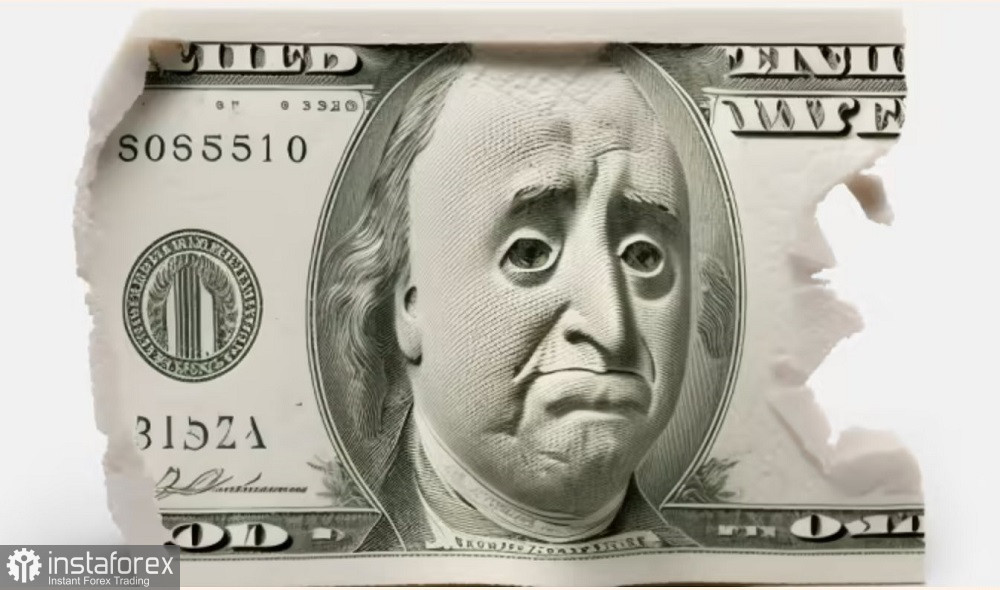The EUR/USD pair returned to the area of the 10th figure, after a brief bearish correction. At the beginning of last week, bears tried to launch a counterattack but stopped at the base of the 9th figure. Then, bulls regained the initiative but failed to overcome the psychologically important barrier of 1.1000. At the start of the new trading week, the EUR/USD bulls are once again entering the battle, despite an almost empty economic calendar.

However, the only significant release on Monday (the IFO index) turned out to be on the side of the euro - almost all components of the release were in the "green", reflecting an improvement in the situation. But overall, the uptrend is primarily due to the weakening of the US currency: the US dollar index was under pressure, amid increased interest in risk assets.
The "green hue" of the IFO report
According to data, the German IFO Business Climate Index in April slightly improved - to 93.6 points with a forecast of growth to 93.4. On the one hand, the indicator has only increased a bit compared to the March values. On the other hand, it shows a consistent uptrend for the seventh straight month. For comparison, it is worth noting that in September last year, it was at the level of 84.4 points. Another component of the report also came out in the "green": the IFO Economic Expectations indicator, which has also been consistently growing for seven straight months.
Commenting on the report, IFO Institute economist Klaus Wohlrabe said that, on the one hand, the German economy is far from a significant recovery. On the other hand, there are positive trends - for example, Wohlrabe noted that recent shocks in the banking sector (SVB, Credit Suisse) did not have a strong impact on the sentiment of German companies. He also pointed out that the economies of China and the United States are supporting German industry: manufacturers' expectations regarding exports have "noticeably increased." In addition, the IFO representative reported that the share of German companies that want to increase prices "has declined again."
The euro received additional support from the latest Bundesbank report, according to which the German economy in the first quarter of this year "turned out to be stronger than expected", and business activity has grown again. However, the prospects for further recovery "remain ambiguous" – due to inflation, which is still putting pressure on consumption.
Nevertheless, the EUR/USD pair's growth is primarily due to the weakening of the US currency. The euro received minor support from the IFO Institute, but this only complemented the already established fundamental picture.
The dollar is losing its grip
Recall that last week, the dollar strengthened its position due to two factors: an increase in hawkish expectations regarding the further actions of the Federal Reserve (against the background of statements by Waller and Bullard) and an increase in risk-averse sentiment. This week, these fundamental factors have weakened their influence. The market has crystallized the opinion that the Fed will raise the rate by 25 basis points at the May meeting, while further steps will depend on the incoming data (in the field of inflation). Waller's statement about "several increases" is rather hypothetical: at present, traders are confident only in the May hike. According to the data from the CME FedWatch Tool, the probability of implementing a 25-point scenario in May is now almost 90%. At the same time, the probability of maintaining the status quo at the June meeting is almost 70%.
At the same time, hawkish expectations regarding the further actions of the European Central Bank continue to strengthen. For example, according to experts from the investment bank Brown Brothers Harriman, there is currently about a 30% probability of a 50 basis point rate hike at the May meeting. Further in the prices, another 25-point increase is expected in June and another 25-point increase in July.
Moving forward, the ECB may take a break, but the probability of a "final chord" – another rate hike in the fall (at the September or October meeting) – is currently almost 50%. Consequently, the final rate level is now considered in the range of 3.75%-4.0%. For comparison, it is worth noting that at the beginning of last week, BBH's expectations for the peak rate were at 3.75%, and the week before that – 3.50%. Hawkish expectations have increased due to corresponding statements from ECB representatives, who, in the majority, continue to insist on maintaining a hawkish course.
Conclusions
The pair has resumed its uptrend after a brief pause and a bearish correction. Looking at the weekly chart, we can see that the pair has stayed in an uptrend since the end of February. The pullback that we observed last week was a correction against the temporary strengthening of the greenback.
At the end of this week, crucial macroeconomic reports for EUR/USD will be published: US GDP, core PCE index, and German CPI. These reports can "redraw" the fundamental picture for the pair. But for today, the established information background contributes to the strengthening of the upward movement.
From a technical point of view, on the daily chart, the pair is between the middle and upper lines of the Bollinger Bands indicator, as well as above all the lines of the Ichimoku indicator, which has formed a bullish "Parade of Lines" signal. The first intermediate target is 1.1050 (the upper line of the Bollinger Bands indicator on the daily chart). After overcoming it, the next bullish target will be the 1.1100 mark.
 English
English 
 Русский
Русский Bahasa Indonesia
Bahasa Indonesia Bahasa Malay
Bahasa Malay ไทย
ไทย Español
Español Deutsch
Deutsch Български
Български Français
Français Tiếng Việt
Tiếng Việt 中文
中文 বাংলা
বাংলা हिन्दी
हिन्दी Čeština
Čeština Українська
Українська Română
Română

